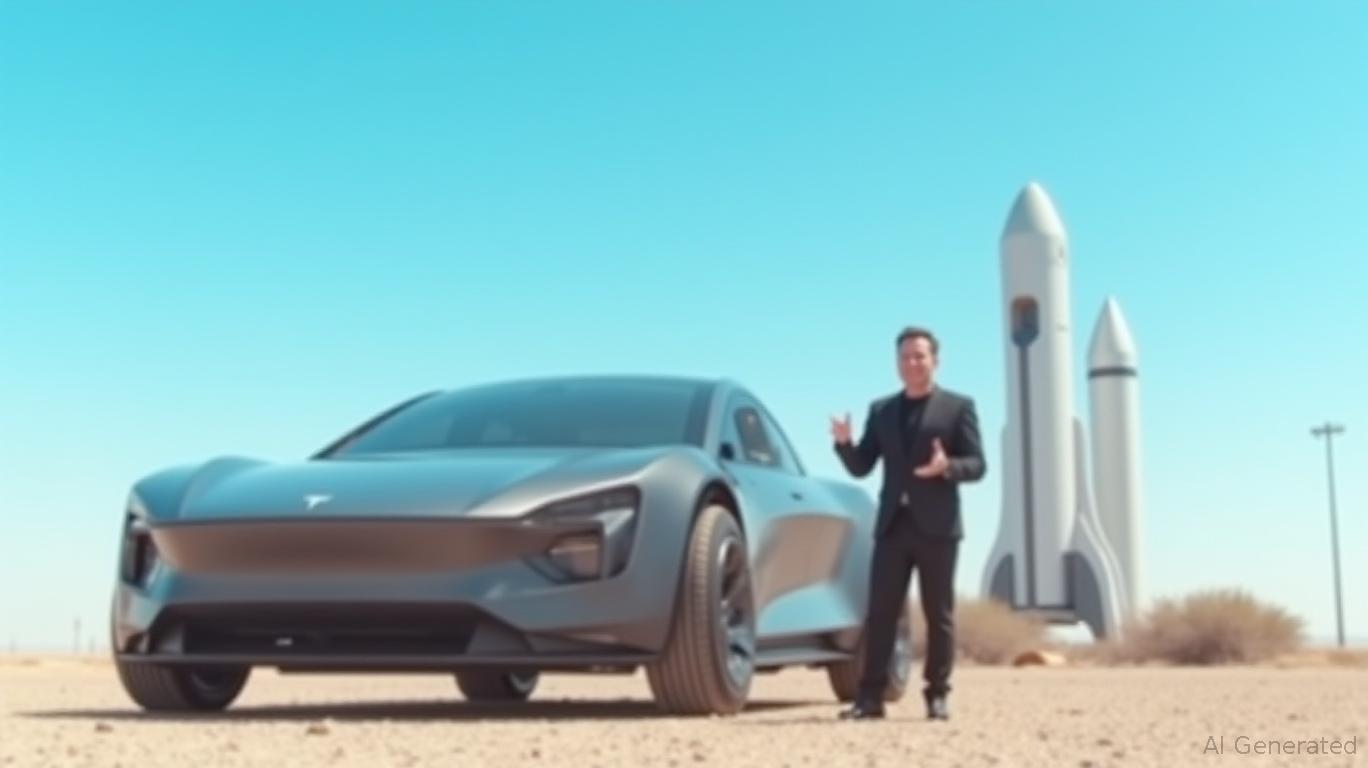Billionaire Fortunes in Flux: How Tesla and LVMH Reinvent Wealth Through Innovation and Resilience
The global economy has long been shaped by the interplay of technological disruption and timeless luxury. Today, two titans—Elon Musk's Tesla/SpaceX empire and Bernard Arnault's LVMH luxury conglomerate—stand as archetypes of how to dominate sectors while weathering market storms. Their strategies reveal a critical truth: sector dominance and market resilience are forged through relentless innovation and strategic diversification. For investors, their trajectories offer a masterclass in wealth creation—and a roadmap for navigating uncertain times.
Tesla: The High-Risk, High-Reward Bet on the Future

Tesla's stock (TSLA) has become a barometer of investor faith in Musk's vision of a sustainable, autonomous future. Over the past five years, its volatility reflects both its promise and peril:
- 2020 Pandemic Surge: Stock rose 740%, fueled by EV demand and Musk's social media-driven hype.
- 2022-2023 Turbulence: A 73.6% plunge from its $409.97 peak in late 2021 to $108.10 in early 2023, driven by Musk's political distractions, operational missteps, and rising competition.
- 2024 Recovery: A rebound to $479.86 by December 2024, buoyed by energy storage growth and FSD optimism.
Why It Matters: Tesla's core strength lies in its dual-engine growth model:
1. Energy Storage Dominance: Megapack deployments surged 154% to 10.4 GWh in Q1 2025, powering utilities and households. Its Powerwall holds 63% of the U.S. residential energy market, with gross profits tripling to $2.6 billion since 2023.
2. Autonomous Driving Ambition: The June 2025 Austin robotaxi pilot aims to validate Tesla's camera-only FSD system, which Musk claims has accumulated 7.7 million miles of daily testing. Success here could unlock $215/vehicle software revenue streams.
Risks: Musk's divided attention (SpaceX rocket failures, X's outages) and geopolitical headwinds (125% U.S.-China tariffs) threaten margins. A 50% rare earth price hike could cost $1.34 billion annually, while BYD's aggressive pricing in Europe and China erodes Tesla's lead. Historical data further underscores the volatility: a strategy of buying 5 days before earnings and holding for 20 days from 2020 to 2024 yielded an 83.3% loss, with a maximum drawdown of 51%, highlighting the dangers of short-term timing around earnings events.
LVMH: The Steady Hand of Luxury's Golden Age

LVMH (MC.PA) epitomizes strategic diversification across fashion, wine, and cosmetics. Its stock has outperformed the S&P 500 during downturns, thanks to:
- Brand Resilience: Iconic labels like Louis Vuitton and Dior maintained demand even as global trade wars raged. In 2023, its Fashion division grew 14%, while Sephora's selective retailing added 25% revenue.
- Cashflow Fortresses: €10.5 billion in free cash flow (2024) and a 23.1% operating margin underscore its financial muscle.
- Geopolitical Agility: European and U.S. sales offset Asian slowdowns, while its LIFE 360 sustainability program (55% GHG reduction vs. 2019 targets) bolsters long-term appeal.
Why It Matters: LVMH's portfolio play insulates it from sector-specific risks:
1. Luxury's Perennial Demand: Ultra-high-net-worth individuals prioritize status symbols, making brands like Tiffany and Bulgari recession-proof.
2. Innovation Without Risk: New ventures—like Louis Vuitton's cosmetics line or Moët's Formula 1 partnerships—tap into cultural trends without diluting heritage.
3. Global Footprint: Europe (25% revenue growth) and North America (Sephora's dominance) balance Asia's volatility.
Risks: Competitor Hermès's 7% organic growth in 2025 highlights LVMH's need to stay ahead. Wines & Spirits division struggles (8% organic decline in 2024) and currency fluctuations also test margins.
The Billionaire Playbook: Diversify or Perish
Musk and Arnault represent two ends of the investment spectrum: high-beta tech vs. low-beta luxury. For investors, combining both offers resilience in cyclical markets:
- Tesla: A long-term speculative play for those betting on energy storage and autonomy. Hold through volatility, but brace for near-term risks like regulatory delays or profit shortfalls. Historical backtests reveal that short-term strategies—such as buying before earnings—can amplify losses, as seen in the -83.3% return from 2020–2024.
- LVMH: A core defensive holding for its cashflow and brand equity. Benefit from its steady growth and geopolitical hedging.
Portfolio Strategy:
- Aggressive Investors: Allocate 20-25% to TSLA, paired with 15-20% in MC.PA to balance risk.
- Conservative Investors: Cap
Conclusion: The Future Belongs to the Bold and the Balanced
Tesla and LVMH prove that wealth creation hinges on sector dominance (owning tomorrow's trends) and resilience (weathering today's storms). For investors, this means embracing Musk's moonshot bets while anchoring portfolios in Arnault's luxury fortress. The path to billionaire wealth in 2025? Innovate aggressively, diversify ruthlessly.

Comments
No comments yet